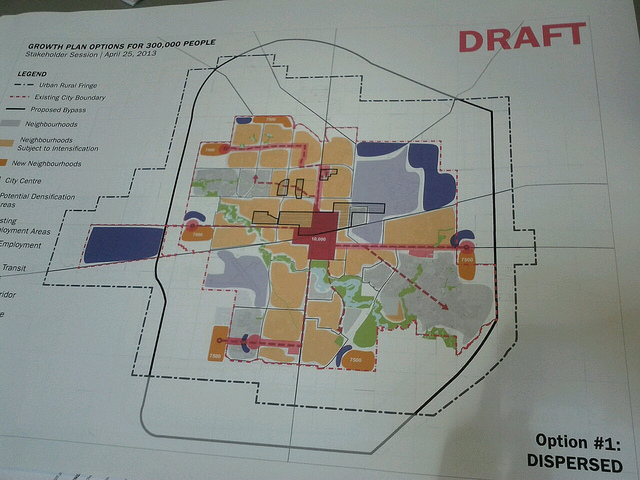This decision has not sat well with the RM of Sherwood. In fact, the relationship between the two bodies has been on shaky ground for more than a year now. Last May, the rural municipality used its right to ask the Government of Saskatchewan to disband the Sherwood-Regina District Planning Commission, in place since 1958. Essentially, the RM walked away from the partnership that had worked so well since the time of Tommy Douglas. The commission provided a venue for the two municipalities to talk about development issues. Mayor Michael Fougere said recently the absence of this communications vehicle was notable. However, the RM’s reeve pointed out the commission wasn’t achieving the means for either party. This meant a new solution needed to be found to address the issue.Regina City Council will gather again in August for a special meeting to go over the proposed new boundary changes before an application for annexation is submitted to the province. Council will also look at compensation for the RM of Sherwood for lost property tax revenues.The deputy reeve for the RM announced in May that he was “shocked and stunned” after hearing from the mayor in the same month that the city was proceeding with annexation plans. In fact, the RM held not one but two media events in May, to discuss the situation. The first event was for the RM to express its dismay over the city’s future plans. But the second event was even bigger.
The second media event saw an Ontario company reveal it wants to build a 736-acre housing development in the RM of Sherwood on Regina’s southeast edge. Once completed, this housing development would be able to house roughly 14,000 people.
Many local amenities are to come with this development, including: single-family homes; townhomes; rental; student housing; retail; and, if needed, up to two elementary schools and one high school. It is to be located southwest of the intersection of Fleet Street South and the South City Limits Road, southeast of the Wascana Country Club.
The Ontario developer explained once the project is completed, the property would yield a value of $2.4 billion.
All this talk of annexation and future growth brings a couple of issues to mind. First, there is no realistic way the City of Regina could ever manage a population of 500,000 people. There would need to be a major overhaul of the transportation system, particularly the buses and traffic-light system.
Downtown Regina is congested enough as it is without potentially adding a few thousand more vehicles. If you throw in the fact the traffic lights are never in sync during rush hour, you then have a maddeningly long wait to even get through the downtown core. If all the lights were in sync going north and south for a good four to five minutes, and then were in sync going east and west for a few minutes, traffic would flow out of downtown like liquid honey.
But the city is either too stupid or too blind to realize that. That’s why doubling the population would make the city centre a nightmare to drive through.
The second issue the city would have to address is the transportation system, particularly buses and physical infrastructure. The bus fleet would have to triple or quintuple to manage a population of 500,000 people.
That’s not to say every single person would be taking the bus, but you would certainly have more people wanting to use public transit. After all, parking downtown is an almost impossible adventure. There is no extra room to add parking metres or spaces.
Furthermore, with people living further and further away from the city centre, the buses would have to run more frequently to ensure people get to work on time. There would also have to be more buses running on a particular route.
Even if the city had to use small paratransit-type buses to transport people, that would suffice. That would at least cut down on the emissions and energy the long buses use on a daily basis. After all, there is no point in using a big bus when it only carries a dozen people.
A final issue is, if the Rural Municipality of Sherwood actually built a 736-acre housing development, how would it: a) service that many homes?, and b) attract 14,000 to live in the RM and not in the city proper? Why would people live in an RM with few amenities and services when the city is not more than a few kilometres away?
Whatever the case, the relationship between the City of Regina and RM of Sherwood is certainly frayed. If the city goes ahead with its annexation plan – and there is no reason to believe it won’t – there most likely won’t be much that could be done to repair the relationship.
—
Jason Antonio is the Regina correspondent for Spectator Tribune.
